CAMPECHE
At this old commercial port, a giant wall still stands that once protected the city from pirate attacks in the 17th and 18th centuries. In this walled city, you’ll see two forts (one of which houses a museum), seven bulwarks and two main gates (the Sea Gate and Land Gate). Thanks to these monuments and the spectacular buildings in the Historic Center, such as the Cathedral and the Templo de Guadalupe, the UNESCO declared Campeche a World Heritage Site in 2002. Without question, Campeche has one of the most well preserved historic centers in the nation
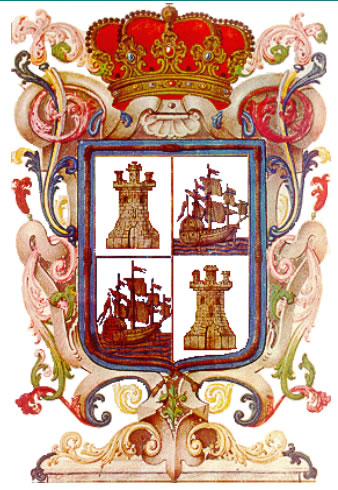
Where is located?
Located in Mexico’s southeastern region, on the Yucatan Peninsula. Borders the state of Yucatan and the Gulf of Mexico to the north, Quintana Roo to the east, Tabasco to the southwest and Guatemala to the south
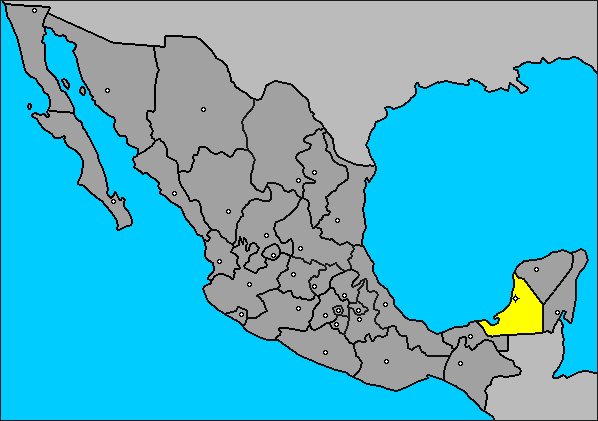
How to get there?
There are various ways to arrive in Campeche. You can fly in to the Campeche International Airport on airlines Aeromexico, Mexicana, Aerocaribe, Aerolitoral and Aerodavinchi. Or you can arrive by bus on lines ADO GL, ADO Primera Clase and ATS. By car, the main routes are the Villahermosa-Campeche Highway 180, the Escarcega-Champoton Highway 261 and the Villahermosa-Escarcega-Chetumal Highway 186.
Alberto Acuña Ongay Campeche International Airport – Located on Av. Lopez Portillo, off the Campeche-China Highway.

ADO First-Class Bus Terminal – Located on the corner of Av. Casa de Justicia and Av. Patricio Trueba de Regil.
ADO Second-Class Bus Terminal – Located on the corner of Av. Gobernadores and Calle 45, in the Santa Ana neighborhood.

Place to stay?
Arriving at Campeche, by means of a 2 hour flight from the Distrito Federal, lodge down in one of the hotels in its historical center, where you can discover the beauty of its colonial architecture decorated in smooth tones of pastel colors.
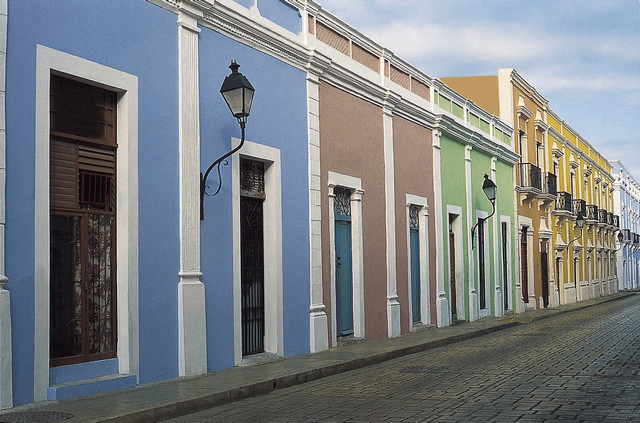
Weather
The climate is tropical, with an average year-round temperature of 26º C (79º F). The city gets rainfall during the summer and autumn.

Things to do and see
You are ready to discover the secrets of the wall that surround the city. Measuring 2 meters (6.5 feet) thick and 8 meters (26 feet) high, its history evokes the times in which Campeche was assaulted by pirates. Actually, this wall holds of its original eight bulwarks, each of which play host to different museums, as well as gates known as "Puerta de Mar" (Sea Gate) and "Puerta de Tierra" (Land Gate). In the middle of the afternoon you can head towards the streetcar base, located just in front of the jardín (garden) on the avenue 16 de Septiembre. Hop aboard one of the streetcars and tour the historical center, where you will immediately be able to make out the white Baroque profile of the Cathedral, opposite to the Plaza de la Independencia, as well as the Portales (Halls), where you will come across numerous clothing and handicraft shops. A few streets later you can admire the Iglesia de "El Dulce Nombre de Jesús" (Church of "The Sweet Name of Jesus), which protects beautiful Baroque alterpieces carved of wood, and the entrance to the Teatro de la Ciudad (City Theater) Francisco de Paolo Toro in Neoclassic style. To round off the afternoon, do not neglect to visit the Playa Bonita, found 8 km (5 mi) from the city, a beach where you can swim and even practice all sorts of aquatic sports.
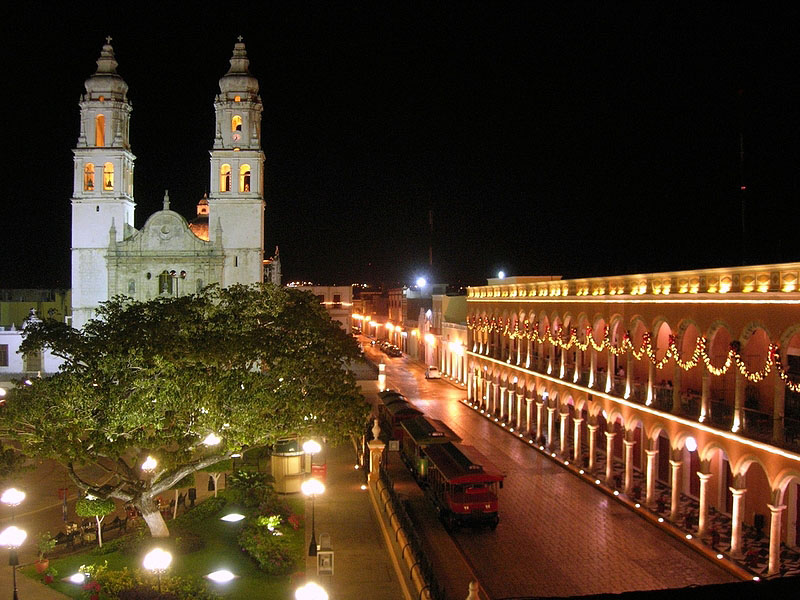
During your stay, we recommend that you visit the Museo de la Cultura Maya, housed in the San Miguel Fort, and the Museo de las Estelas Mayas, which exhibits regional art in the San Pedro Bulwark. At night, don’t miss the fascinating light and sound show at the Fort of San Jose El Alto. After the show, you can take a walk along the Historic Center’s cobblestone streets, where you’ll see a wide variety of stores, restaurants, bars and cafes. You can also take a stroll down the beautiful 3.5-km (2-mi) boardwalk, which leads to a tourist walkway, parks and a bicycle track.
In Campeche’s surrounding areas, you can enjoy an outdoor adventure at the Ria Celestun Biosphere Reserve, which is the habitat of hundreds of pink flamingoes. In addition, you can check out Calakmul, one of the largest biosphere reserves in the nation, which also has an interesting Mayan archaeological zone. Calakmul is a great spot to go camping, mountain biking and hiking.
Campeche is surrounded by important ecological reserves where you can observe diverse types of plant and animal life. Many of them are protected areas in order to sustain the survival of such endangered species as the hawksbill sea turtle and the jaguar.
Ria Celestun Biosphere Reserve – Located 145 km (90 mi) from Campeche along the state highway. This reserve has one of the largest mangrove areas on the Gulf Coast. It’s a great place to relax and is also the breeding grounds of the pink flamingo and the hawksbill sea turtle. This reserve has coastal dunes and petenes (small floating island formations with vegetation). The animals inhabiting this area include manatees, octopuses, crown conches, horseshoe crabs, seagulls, white herons, diving ducks, Yucatan quails, wildcats, Jabiru storks and boa constrictors, among other species.
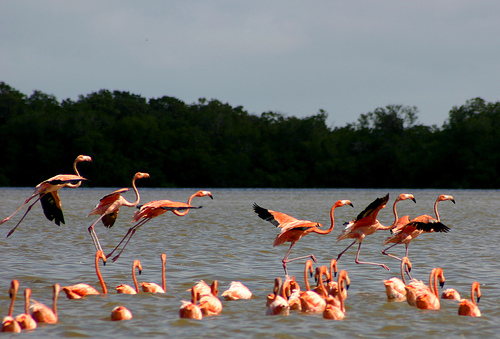
Calakmul Biosphere Reserve – Located 210 km (130 mi) southeast of the capital. This protected tropical reserve is the largest in Mexico, with 723,185 hectares (more than 1.7 million acres). It’s an ideal place to observe flora and fauna, as it has lowland jungle vegetation and animal species such as jaguars, ocelots, wildcats, spider monkeys, howler monkeys, anteaters, great curassows, harpy eagles and tapirs.

Laguna de Terminos – Located 181 km (112 mi) southwest of Campeche, off Highway 180, in Ciudad del Carmen. This protected area, which covers 705,000 hectares (1.7 million acres), forms part of Mexico’s most important delta. In addition, it is the largest and most voluminous estuary-lagoon system in the nation. This area is ideal to observe a wide variety of coastal and aquatic plant species.
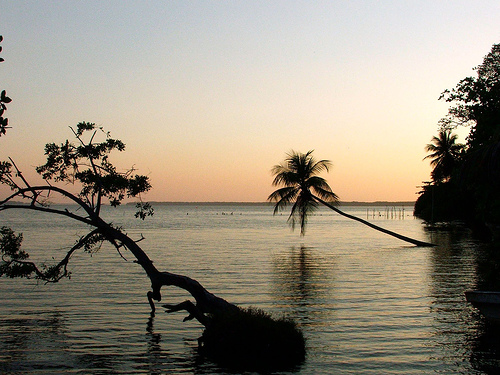
Zona de los Petenes – Located 90 km (56 mi) north of the capital. This zone includes the cities of Calkini, Hecelchakan, Tenabo and Campeche. It has small floating island formations that develop in the mangroves. The sinkhole here plays a key role in sustaining life in this ecosystem, as it maintains a natural equilibrium between the freshwater on the surface and the salt water on the bottom. Here you’ll see diverse flora, including red, black and white mangroves near the ocean, and buttonwood mangroves in the lowland jungle areas.
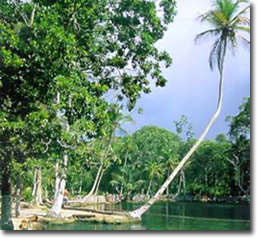
La Estacion de la Vida Silvestre en Hampolol – Located 15 km (9 mi) from the city of Campeche, off the Campeche-Tenabo Highway. This 100-hectare (247-acre) area provides ideal conditions for lowland flora. The region has swamp zones, which are the habitat of various reptiles, amphibians, mammals and songbirds, making it one of the state’s important ecological areas, largely because of its key water sources.
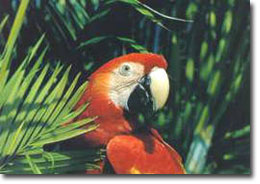
Things to buy
During your visit to Campeche, don’t forget to try the tamales with chaya leaves and the pan de cazon (tortillas stuffed or layered with shark, beans and salsa), among other regional Mayan cuisine.
If you’d like to go shopping, you’ll find various options in Campeche, including crafts shops, malls, and markets. A good place to shop for clothes and crafts and try some delicious regional food is the Pedro Sainz de Baranda market. You can also find clothes and crafts at the Casa de Artesanias Tukulna and the Baluarte de San Pedro, to mention just a few places. In addition, you can visit such shopping centers as the Plaza del Mar and Plaza Universidad, which have department stores, movie theaters, fast food joints, boutiques and parking lots. All of these places offer excellent products and quality service.




Mexico